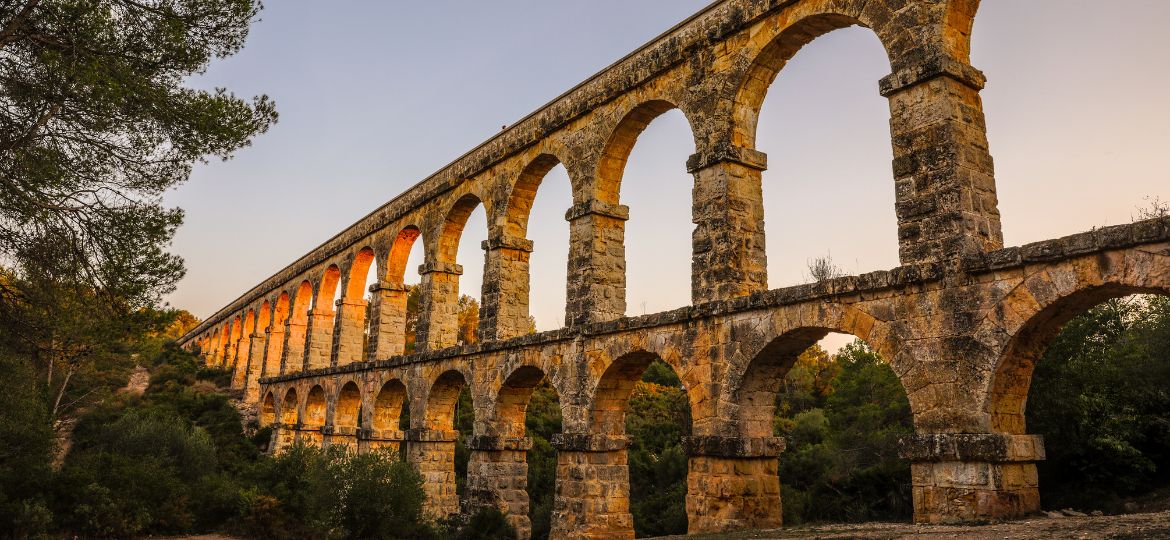
The Legacy of Water: Hydraulic Heritage and Sustainability Through History
Water has been the driving force behind civilization. From the earliest organized societies to today’s sprawling metropolises, the management of water has shaped the rise and fall of empires. As the global water crisis becomes an urgent concern, it is worth looking back to rediscover the lessons embedded in ancient hydraulic infrastructures. How did the Romans manage to supply their cities through monumental aqueducts? What can the Persian qanats teach us about underground water management? And how did the Andean cultures transform arid lands into fertile valleys?
This journey through the world’s hydraulic heritage reveals that ancient engineering was not only efficient but also remarkably sustainable. Perhaps most fascinating is how every culture endowed water with a sacred significance that continues to shape our current practices in managing and preserving the planet’s most precious resource.
Roman Aqueducts: Precision and Monumentality
The Romans recognized water as the cornerstone of urban development. They built aqueducts to transport water from distant sources to their cities, achieving a balance between efficiency and longevity. Iconic examples such as the Aqueduct of Segovia in Spain or the Pont du Gard in France stand as enduring testimonies to their engineering prowess.
These aqueducts, constructed with nearly imperceptible gradients and resilient materials, reflect a fundamental principle of sustainability: investing in long-lasting, well-planned infrastructure. Today, many cities still rely on systems inspired by Roman designs—though often without the same long-term vision.
Persian Qanats: Wisdom Beneath the Surface
While the Romans emphasized grandeur, the Persians developed a subtler yet equally effective system: the qanat. These underground tunnels transported water from aquifers to cities and farmlands, harnessing gravity while minimizing evaporation in arid climates. Still in use in parts of Iran, Afghanistan, and North Africa, this technique enabled the creation of thriving agricultural oases in desert environments.
The qanat serves as a reminder of the importance of using water resources without depleting them. In an age where aquifer overexploitation is a growing concern, this model of sustainable groundwater harvesting deserves renewed attention.
Andean Irrigation Systems: Harmony with the Mountains
In the Andes, pre-Hispanic cultures devised ingenious irrigation systems that remain impressive today. The waru waru (or raised fields), for example, combined water channels with elevated planting beds to maintain soil moisture and prevent erosion.
Another notable example is the amunas, pre-Inca canals designed to infiltrate water into the ground and naturally recharge aquifers. Still practiced in some Peruvian communities, this method is a lesson in environmental adaptation and effective use of hydrological cycles.
Innovation Rooted in History: Almar Water Solutions’ Approach
The wisdom of these ancient infrastructures has not gone unnoticed by companies like ours, committed to finding sustainable water management solutions. At Almar Water Solutions, we apply the same principles of efficiency, durability, and sustainability to our desalination, water reuse, and supply projects.
Through our initiatives across the Middle East, Latin America, and Africa, we demonstrate that the key to success lies not only in technological innovation but in integrating time-tested sustainable models into modern systems.
Ancient civilizations left us a clear message: managing water efficiently is not merely a technical issue,it is a commitment to sustainability and resilience. As these examples show, success in water infrastructure hinges on a balance between engineering, respect for ecosystems, and a long-term vision.
Today, we are proud to carry this legacy forward, adapting it to 21st-century challenges and proving that the future of water depends on lessons from the past. In a world where water security is increasingly critical, it is time to reclaim the strategic and sustainable mindset that once enabled the prosperity of great civilizations. After all, water is not just a resource—it is the foundation of our future.
REFERENCES:
The Persian Qanat. World Heritage Convention. UNESCO.
Old Town of Segovia and its Aqueduct. World Heritage Convention. UNESCO.
La práctica de riegos ancestrales andinos: el riego por Kanis.

